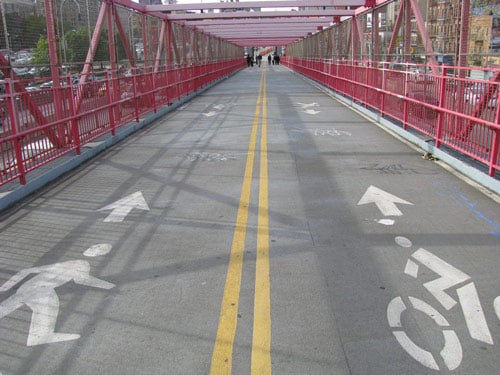Design to Minimize Adverse Health and Safety Consequences
In some circumstances, a solution to one problem may exacerbate another problem. For example, active transportation improves health overall by providing physical activity and reducing emissions, however, the emphasis on vehicular travel in our current transportation system results in pedestrians and bicyclists disproportionately suffering from injuries. Therefore, increasing active transportation may increase the absolute numbers of injuries unless protective and alternate mode infrastructure and policies are concurrently implemented.
In addition, decreasing the size and weight of vehicles and increasing adoption of new vehicle technologies will reduce greenhouse gas and other emissions but could result in more injuries from car crashes and impact environmental health in other ways.
Recommendations

- Support policies that protect pedestrians and bicyclists from motor vehicle crashes, such as:
- Designing streets to reduce motor vehicle speeds and minimize pedestrian and bicycle injuries.
- Piloting and evaluating policies that assume motor vehicle driver responsibility for accidents involving child pedestrians and child bicyclists in residential neighborhoods and school zones.
- Implementing multimodal level of service indicators as performance measures for roadways that include measurements of pedestrian, bicyclists, and public transportation operability.
- Increasing the adoption of motor vehicle technologies that reduce injuries to pedestrians, such as bumpers designed to minimize pedestrian injury.
- Correcting existing hazards and enhance infrastructure for pedestrians and bicyclists.
- Support policies that maximize the benefits of shifting to efficient vehicles, such as:
- Supporting efforts to reduce size disparities in the fleet of vehicles.
- Supporting motor vehicle design efforts to incorporate features that reduce the likelihood of injury to occupants of other vehicles, bicyclists, and pedestrians.
- Reducing the environmental health impact of technologies that improve fuel economy, such as recycling programs for hybrid vehicle battery systems.
- Encourage states and communities to consider health impacts as part of transportation planning. Health impact assessments (HIAs) and safety audits may identify the impact of a new policy, program or major transportation project on community and individual health.
- Enhance coordination with public health agencies for health assessments as part of environmental impact statements.
